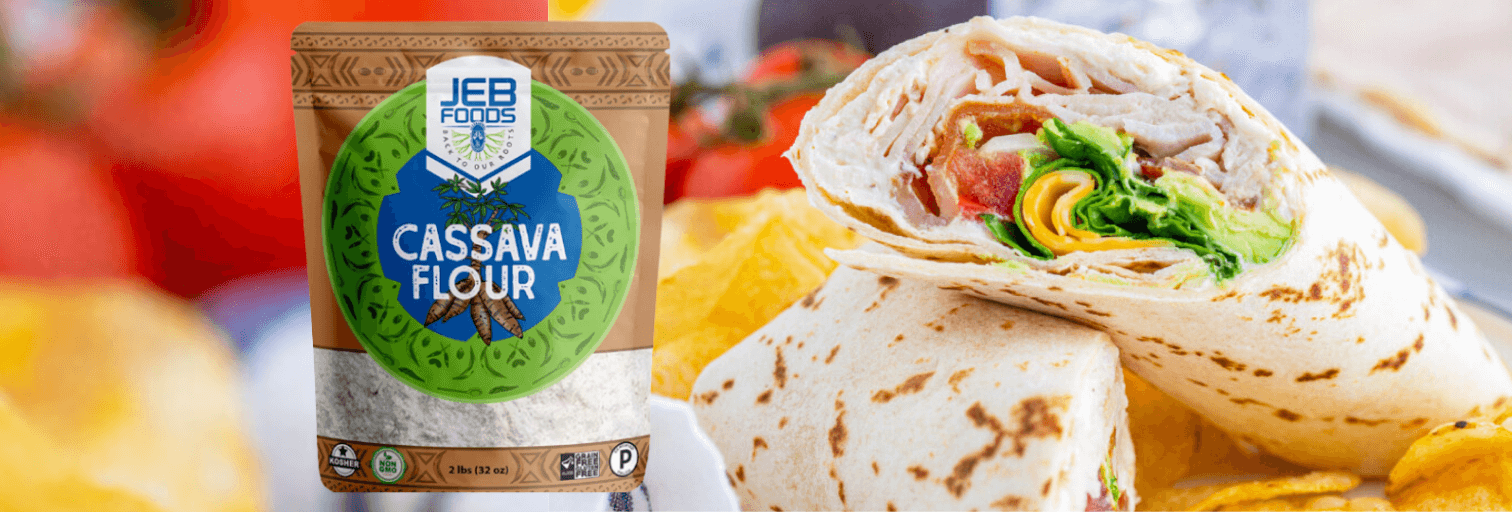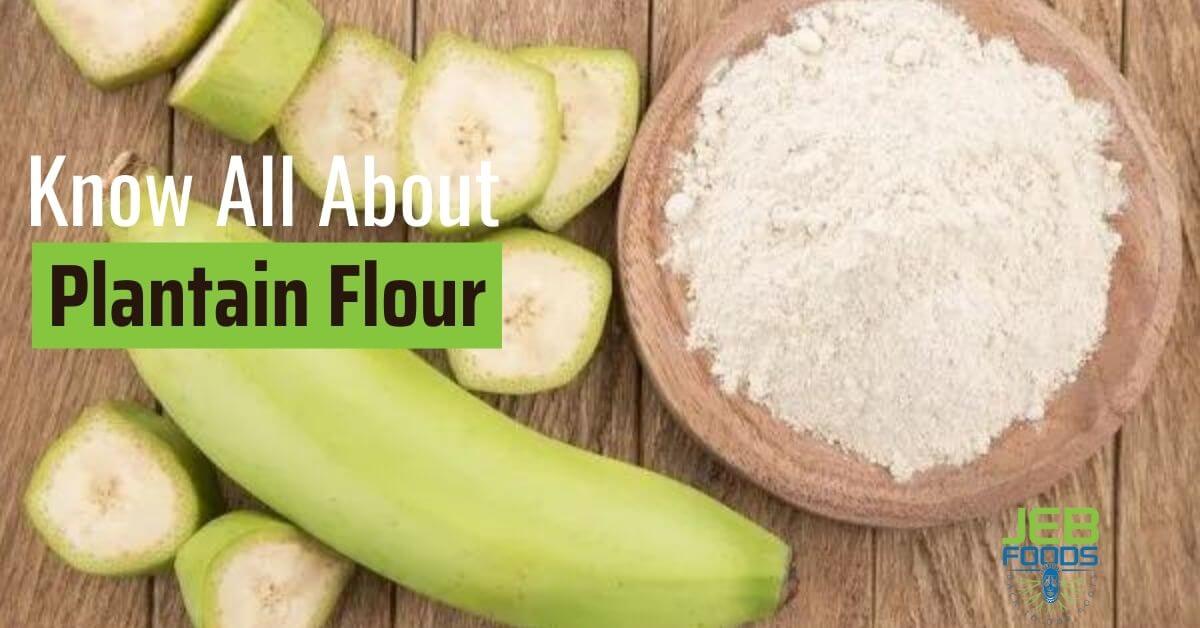Is Cassava Flour worth the hype in 2022? Cassava flour is living up to the hype as a gluten-free, grain-free flour.
It’s not surprising, given that those on restricted diets often have to mix several flours to achieve the same consistency as wheat flour.
That is not the case with cassava flour. Checkout the cassava flour overview
After touring Africa and Southeast Asia for many months and eating excellent, locally produced cassava bread, cakes, and side dishes, I realized cassava flour had enormous potential.
Baking with cassava flour is one of the most underutilized ingredients for making the baking process easier.
Although not as widely used as some other alternative flours, Cassava flour can be a useful ingredient in catering to special diets because it is grain-free, gluten-free, and nut-free.
More people are coming up to the cassava flour magic but is it worth the hype. I will let this be known to you in this article.
Facts That the Hype Shows The Worth Of Cassava Flour
Table of Contents
Toggle1. It Is Nut-Free, Gluten-Free, And Grain-Free.
It is a staple crop for millions of people in South America, Asia, and Africa. Cassava root (also known as yucca or manioc) is a high-carbohydrate starchy tuber related to yam, taro, plantains, and potato.
Also a gluten-free, grain-free, nut-free, vegan, vegetarian, and paleo root vegetable.
2. Cassava Flour And Tapioca Flour Are Not The Same.
There are major distinctions between cassava flour and tapioca flour, which are frequently used interchangeably.
Tapioca is a starch made from the cassava root after it has been washed and pulped. The moist pulp is then pressed to extract a starchy liquid. After all of the water in the starchy liquid has evaporated, the tapioca flour remains.
3. Cassava Flour Is Not Poisonous
Cassava roots contain naturally occurring cyanide chemicals (as do almonds and spinach!). and can be highly poisonous. But only if consumed uncooked.
As a result, traditional societies that rely on cassava for nutrition have centuries-old soaking, boiling, and fermenting methods. These mechanisms eliminate the harmful chemicals and save people from becoming ill.
4. Cassava Flour Is High In Carbohydrates
Cassava is a starchy tuber; therefore, you’ll expect it to have a high carbohydrate profile. However, it is certainly greater than you anticipated. Cassava, for example, has twice the calories and carbohydrates as sweet potato per 100 grams.
WHEAT FLOUR AND CASSAVA FLOUR ARE THE MOST SIMILAR (OF GLUTEN-FREE FLOURS)
This is the holy grail attribute of cassava flour. Unlike other gluten-free flours like almond or coconut flour, cassava flour has a mild and neutral flavor. It also has a soft, powdered feel rather than being rough or gritty.
What Are The Uses Of Cassava Flour
Cassava flour may be swapped for wheat flour in a variety of recipes. Cassava is a starch-tuber that may be eaten whole, as root chips, or shredded to produce flour for bread and crackers.
It is also used in puddings and beverages containing tapioca pearls. Cassava is widely consumed in Africa, Asia, and South America.
It is a vital element of the carbohydrate diet for millions of people, along with other roots and starch-rich foods, including yam, taro, plantains, and potato.
It works well as a replacement for wheat and other flour and may be substituted for wheat flour in any recipe, making gluten-free baking and cooking a joy.
Cassava flour is made by grating cassava, drying it, and then grinding it to a fine powder. Gluten-free cassava flour is available here.
In terms of flavor and texture, many people believe it is the closest gluten-free equivalent to wheat flour. As a result, it’s an excellent gluten-free baking and culinary substitute for wheat flour.
Cassava flour is versatile and may be used in several dishes, including:
In baking, you may use it to substitute wheat flour in various dishes, such as bread.
- Muffins
- Cookies
- Cakes
- Brownies
- To create pasta or doughnuts in pasta.
- Thickening: To make a sauce, gravy, or pie filling thicker.
- Farofa: Farofa is a Brazilian dish similar to couscous and is made from toasted cassava flour.
- Flatbreads: Cassava flour is excellent for making flatbreads and tortillas that can be toasted or grilled.
- Cassava flour is more absorbent than wheat flour. As a result, a person may need to use slightly less cassava flour in a dish than ordinary wheat flour.
Benefits Of Cassava Flour
To determine if cassava flour is worth the hype, then the benefits has to be looked at.
Cassava is widely consumed in many regions of Africa, Asia, and South America, and it is an essential component of millions of people’s carbohydrate diets.
It is a root-tuber that cassava flour is processed from, and It has a lot of benefits.
Let me tell you some of these incredible benefits
1 – anti-inflammatory effect against arthritis
There are two main ingredients in cassava called the saponins and polyphenols that have anti-inflammatory and analgesic effects and can be used directly to treat rheumatoid arthritis and osteoarthritis.
The saponins also have a detergent-like effect and are responsible for using cassava root extract for manufacturing natural soaps and shampoos.
2- Antioxidant effect
The cassava root has resveratrol. Polyphenols like resveratrol are known for their antioxidant properties, which protect the body from free radicals that can damage the cells that cause cancer, diabetes, and heart disease.
It is also one of the roots with the highest concentration of vitamin C. This vitamin is the first in our immune system’s defenses, which stimulates the production and activity of white blood cells.
Vitamin C also acts as an antioxidant, preventing free radicals from damaging our cells and causing mutations.
In addition, cassava also has folic acid, linked to improved skin and eye health due to its antioxidant effects in these tissues.
3- Healthy source of carbohydrates for diabetics
A glass and cassava have nearly four grams of fiber, important in weight management and digestion.
People with diabetes are advised to maintain a high-fiber diet to prolong the digestive process, which helps the body regulate blood sugar and cholesterol levels.
4- Protects the skin from the sun’s ultraviolet rays
Mexican researchers tested active components made from a native cassava kart like resveratrol and found that they could prevent damage caused to skin by the sun’s UV rays.
They found that the substances had a higher skin protection index than commercially available sunscreens.
Resveratrol has been shown to strengthen the skin and increase its resistance to sun damage, eventually leading to skin cancer.
5– Highly energetic
Cassava has almost twice as many calories as potatoes. It is probably one of the tropical tubers with the highest concentration of calories.
A 100 gram serving of cassava contains 160 calories. Although cassava is low in fat and protein, it is still higher in protein than sweet potatoes, potatoes, and bananas.

6- Ideal for gluten-free diets
Cassava can be used in all variations in patients with celiac disease (gluten intolerance) or allergies.
7- It works in building bone mass and new tissues
Young cassava leaves are a good source of protein and vitamin K. This vitamin plays an important role in regenerating bone mass in our body.
Vitamin C is also a key component in collagen production, which promotes cell renewal and the health of bone, blood and muscle tissues.
8- Beneficial to the heart
Being healthy in the heart is one of the great benefits of cassava. Cassava is one of the main minerals important for heart health, such as zinc, magnesium, copper, iron, manganese, and potassium.
Every 100 grams of cassava contains 271 milligrams of potassium. Potassium is an important component in regulating the fluid cells of the body as a whole.
It helps relieve tension in the blood vessels and arteries, which reduces the likelihood of stress on the heart by preventing atherosclerosis, strokes, and heart attacks.
Also high in fiber, which helps balance fatty acid levels, lower cholesterol, and promote a healthy cardiovascular system.
9- helps you lose weight
Cassava has simple sugars that, when ingested, help regulate our body’s glucose levels. The altered glucose level makes us feel hungrier than necessary.
Consuming cassava can avoid this effect and help you lose weight.
10- Healthy for pregnant women
The cassava has folic acid, responsible for reducing the likelihood of neural tube defects during the formation of babies.
Folic acid intake is common for pregnant women, and eating cassava is a great way to eat natural duck.
Variations In Use Of Cassava Flour to determine worth
- Cassava flour and sprinkles are the most common variations of cassava for human consumption, and both have many health benefits.
- Tribes in the southeastern United States also use cassava leaves to make shampoo, soap, and other toiletries.
- In naturopathy, cassava root extract is mainly used to combat joint pain.
- Cassava fiber can be used in the manufacture of fabrics and ropes.
- Currently, cassava extract is sold in powder form and capsules as a dietary supplement in specialty stores. They are generally made from leaves, bark, or plant roots.
Tapioca Flour, Wheat Flour And Arrowroot As compared to Cassava Flour
Tapioca flour and cassava flour are not interchangeable. Cassava flour is created by grinding up the entire cassava root.
On the other hand, Tapioca flour is manufactured from the starch derived from cassava root. It does not make full use of the root.
Furthermore, the textures of these two flours are noticeably different. Cassava flour is similar to white flour, but tapioca flour is similar to cornstarch.
These flours are used in various ways in various dishes. Cassava flour, for example, is used as a foundation in my Cassava Flour Cookies.
Tapioca flour is best used in small amounts because it is typically used as a thickener. Tapioca flour is used as both the stuffing and as a thickener in the sauce.
Cassava flour and tapioca flour are different. They are built differently, have distinct characteristics, textures, and functions.
In comparison to Wheat Flour
Cassava flour, also known as root vegetable flour, is formed from subterranean tubers with bark-like brown skin and white roots created by shredding and drying the fibrous cassava root.
Wheat flour, also known as grain, is created by removing the bran or outer shell from the wheat berry and grinding the seed into a flour-like consistency.
Cassava flour and wheat flour are required components in bread, cakes, cookies, and most baked products.
You can check this case study for Cassava flour vs. Wheat Flour
In comparison to arrowroot
Arrowroot powder is a starchy product derived from the root of Maranta arundinacea, a tropical plant. When arrowroot is harvested, it resembles other subterranean tubers oblong in forms, such as cassava, yucca, or kudzu.
Arrowroot is used to thicken fillings and soften the texture of baked products made using alternative flours. It has cornstarch-like characteristics.
It is also gluten-free when compared to cassava flour. However, if you combine it with other flours, it performs best as a cassava flour replacement.
The low glycemic index and high potassium content of arrowroot have been found to benefit diabetics. As a result, experts are presently exploring the advantages of arrowroot flour as a component in diabetic-friendly snacks.
When the starch is utilized in meals, arrowroot is LIKELY SAFE when consumed by mouth.
There isn’t enough reliable data to determine if it’s safe at bigger doses like those seen in medicine. Constipation and stomach pain are possible side effects.
Why Cassava Flour Is Worth The Hype
Cassava flour is deserving of the hype because of its enhanced nutritional content. It is gaining popularity in the global flour market for household use.
Calcium, potassium, salt, phosphorus, iron, and other minerals are all found in this wonderful flour.
It is abundant in vitamins such as vitamin A and vitamin C, in addition to being mineral-rich.
Cassava flour consumption has increased due to the known health advantages of vitamin C, which is beneficial for the skin and hair and helps strengthen the immune system.
Demand for cassava flour is rapidly increasing in both the culinary and feed industries.
Due to growing customer demand for healthier meals, cassava flour is becoming more popular in the food industry as a gluten-free and nutritionally dense ingredient.
It’s also found in several processed goods as a sweetener. Bakeries and confectioneries also utilize cassava flour.
I can go on and on to discuss how beneficial cassava flour is, and I must say the hype is not enough. Get your organic cassava flour here
In bakeries, cassava flour is commonly mixed with wheat flour in various ratios to improve the nutritional content of bread products.
Cassava is also considered a key food security option in arid and desert locations due to its ability to thrive in low-water environments.
Final Thoughts
It is seen that cassava flour is worth the hype in 2022 and beyond based on the huge benefits.
The world’s Cassava Flour Market is anticipated to develop rapidly based on the rising consumer desire for living a healthy lifestyle has raised the consumption of healthy food items and food components, which is expected to fuel the global Cassava Flour Market’s development.
To get started with cassava flour, check out my favorite homemade recipes that you can jump on.
To make things handy, you should get your cassava flour from one of the best in the US. Jeb foods cassava flour.




